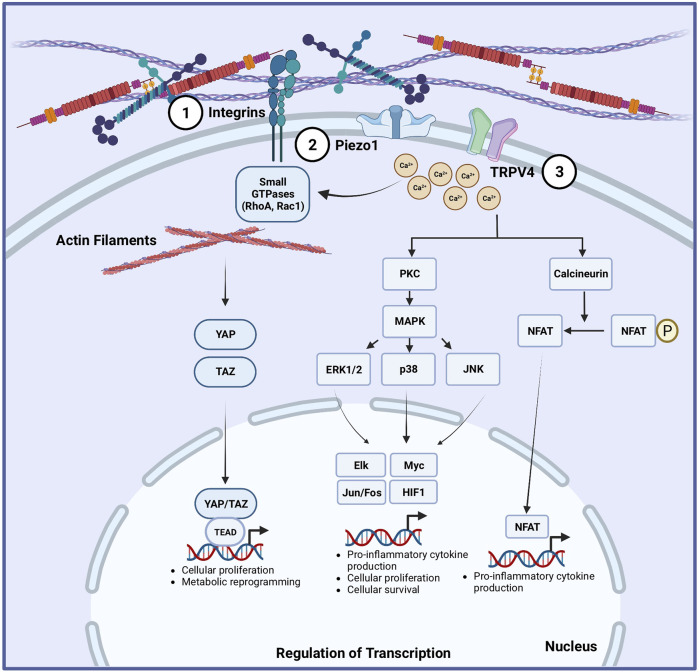FIGURE 1.
Proposed mechanotransduction pathways in macrophages and dendritic cells. Multiple mechanisms are implicated to translate mechanical cues into cellular responses in macrophages and dendritic cells (DCs) (Martino et al., 2018). Integrins can sense extracellular matrix stiffness changes, which can translate into activation of small GTPases and subsequent modification of the subcellular organization and structure of F-actin filaments. This is linked to activation of the Hippo signaling pathway by increasing YAP/TAZ activation, leading to the upregulation of genes involved in glycolysis, amino acid metabolism, cellular proliferation and cell survival. Mechanosensitive ion channels are expressed in macrophages and DCs, including Piezo1 (Shaheen et al., 2017) in both, and TRPV4 (Oakes et al., 2009) in macrophages. Physical forces change the tension in the plasma membrane of cells, causing the ion channels to open. Piezo1 and TRPV4 opening allows the entry of extracellular Ca2+ ions into the cells. The influx of Ca2+ ions can activate the protein kinase C (PKC)/mitogen-activated protein kinase (MAPK) pathway or calcineurin/NF-κb pathway, leading to the upregulation of transcriptional programs that can increase cellular proliferation, differentiation, and inflammatory responses.

